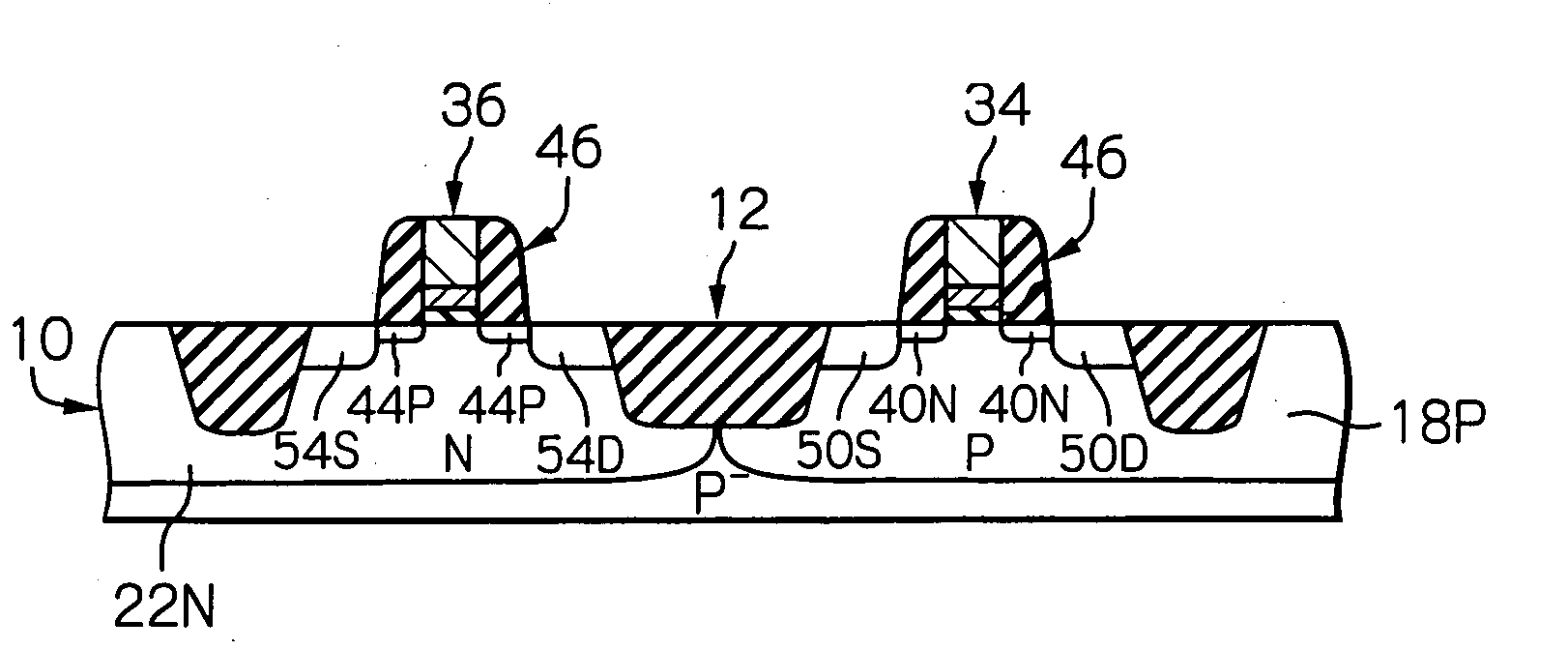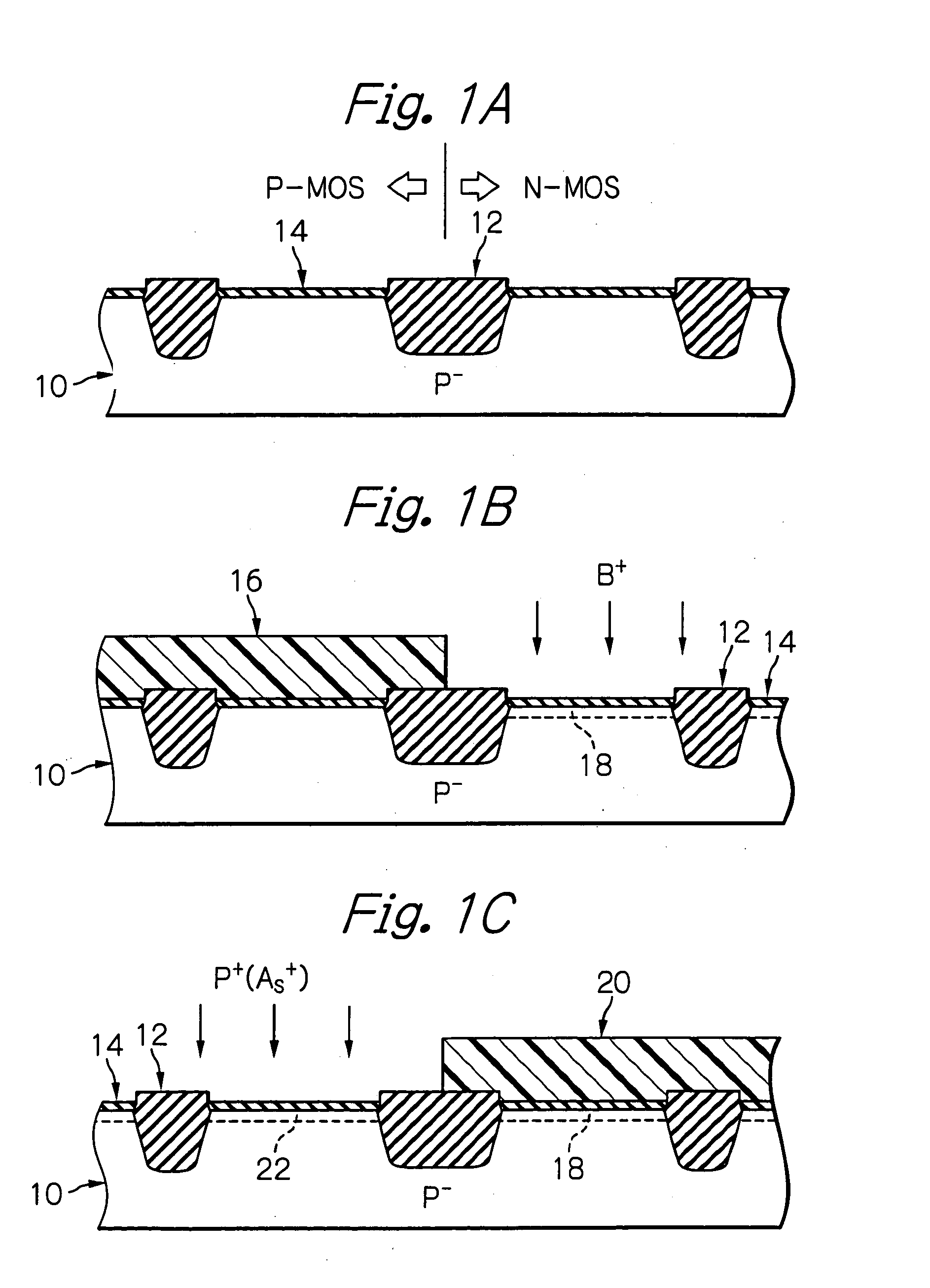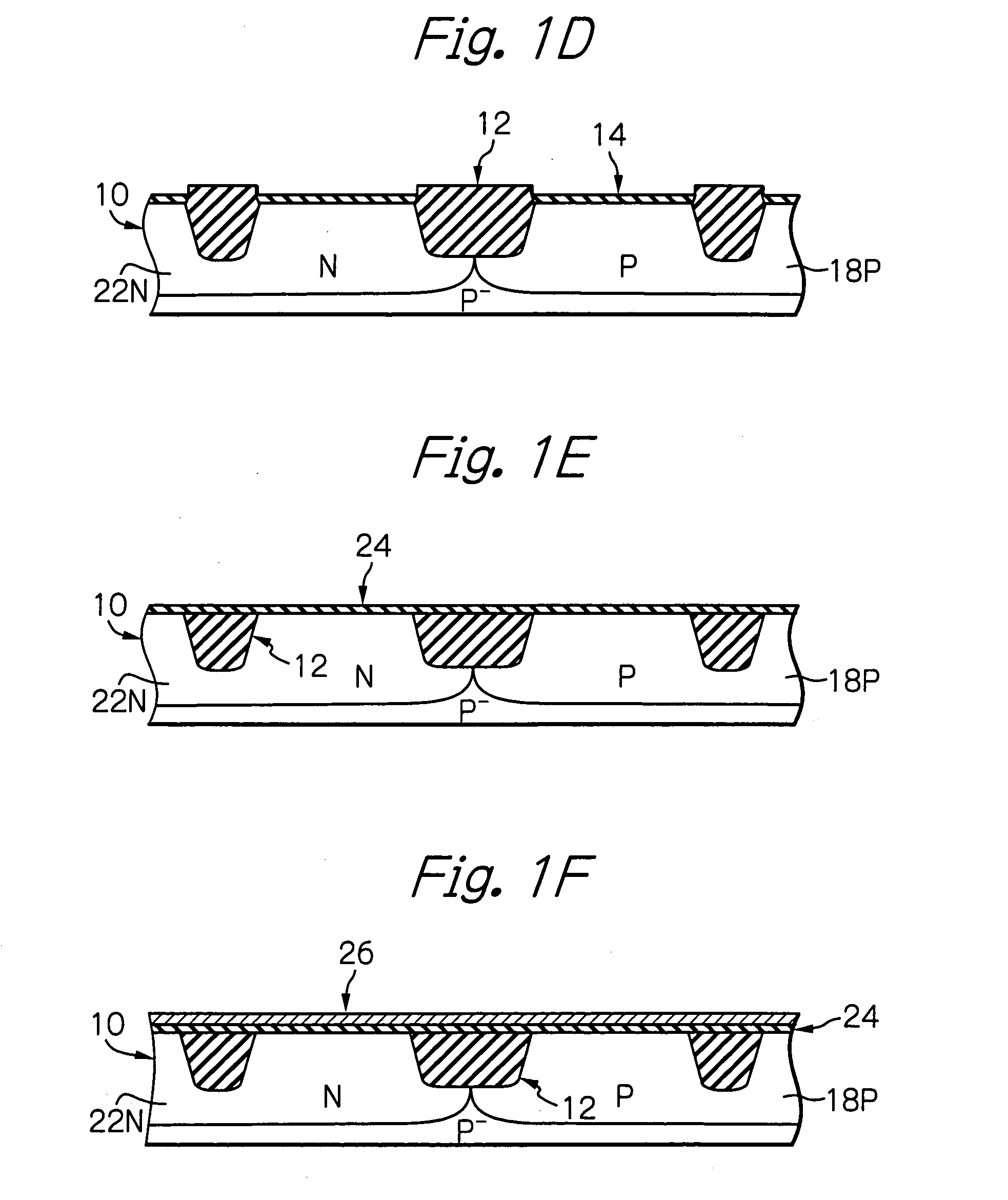Semiconductor device featuring multi-layered electrode structure
a technology of semiconductor devices and electrode structures, which is applied in the direction of semiconductor devices, semiconductor/solid-state device details, electrical apparatus, etc., can solve the problems of fine silicon dioxide layer not being used as the gate insulating layer in mos, deterioration of the characteristic of the gate insulating layer, and impurities in the high-k gate insulating layer
- Summary
- Abstract
- Description
- Claims
- Application Information
AI Technical Summary
Benefits of technology
Problems solved by technology
Method used
Image
Examples
first embodiment
[0052] With reference to FIGS. 1A to 1N and FIGS. 1P to 1S, a production process for manufacturing a semiconductor device featuring a complementary MOS transistor according to the present invention will be now explained.
[0053] First, as shown in FIG. 1A, a p−-type semiconductor substrate 10, which is derived from, for example, a p−-type monocrystalline silicon wafer, is prepared. A surface of the semiconductor substrate 10 is sectioned into a plurality of chip areas by forming scribe lines therein, and a part of one chip area is illustrated in a cross sectional in FIG. 1A. In this drawing, reference 12 generally indicates an element-isolation layer, which is formed in the chip area concerned, by using a STI (shallow-trench isolation) method, such that a P-channel type MOS transistor-formation area “P-MOS” and an N-channel type MOS transistor-formation area “N-MOS” are defined on the surface of the chip area. Also, the semiconductor substrate 10 is already subjected to a thermal oxid...
second embodiment
[0137] Next, with reference to FIGS. 9A to 9D, a production process for manufacturing a semiconductor device featuring a complementary MOS transistor according to the present invention is explained below.
[0138] In FIG. 9A, reference 56 indicates a p−-type semiconductor substrate, which is derived from, for example, a p−-type monocrystalline silicon wafer. Similar to the aforesaid semiconductor substrate 10, a surface of the semiconductor substrate 56 is sectioned into a plurality of chip areas by forming scribe lines therein, and a part of one chip area is illustrated in a cross sectional in FIG. 9A. In this drawing, reference 58 generally indicates an element-isolation layer, which formed in the chip area concerned, by using a STI (shallow-trench isolation) method, such that a P-channel type MOS transistor-formation area “P-MOS” and an N-channel type MOS transistor-formation area “N-MOS” are defined on the surface of the chip area.
[0139] The semiconductor substrate 56 is already p...
PUM
 Login to View More
Login to View More Abstract
Description
Claims
Application Information
 Login to View More
Login to View More - R&D
- Intellectual Property
- Life Sciences
- Materials
- Tech Scout
- Unparalleled Data Quality
- Higher Quality Content
- 60% Fewer Hallucinations
Browse by: Latest US Patents, China's latest patents, Technical Efficacy Thesaurus, Application Domain, Technology Topic, Popular Technical Reports.
© 2025 PatSnap. All rights reserved.Legal|Privacy policy|Modern Slavery Act Transparency Statement|Sitemap|About US| Contact US: help@patsnap.com



